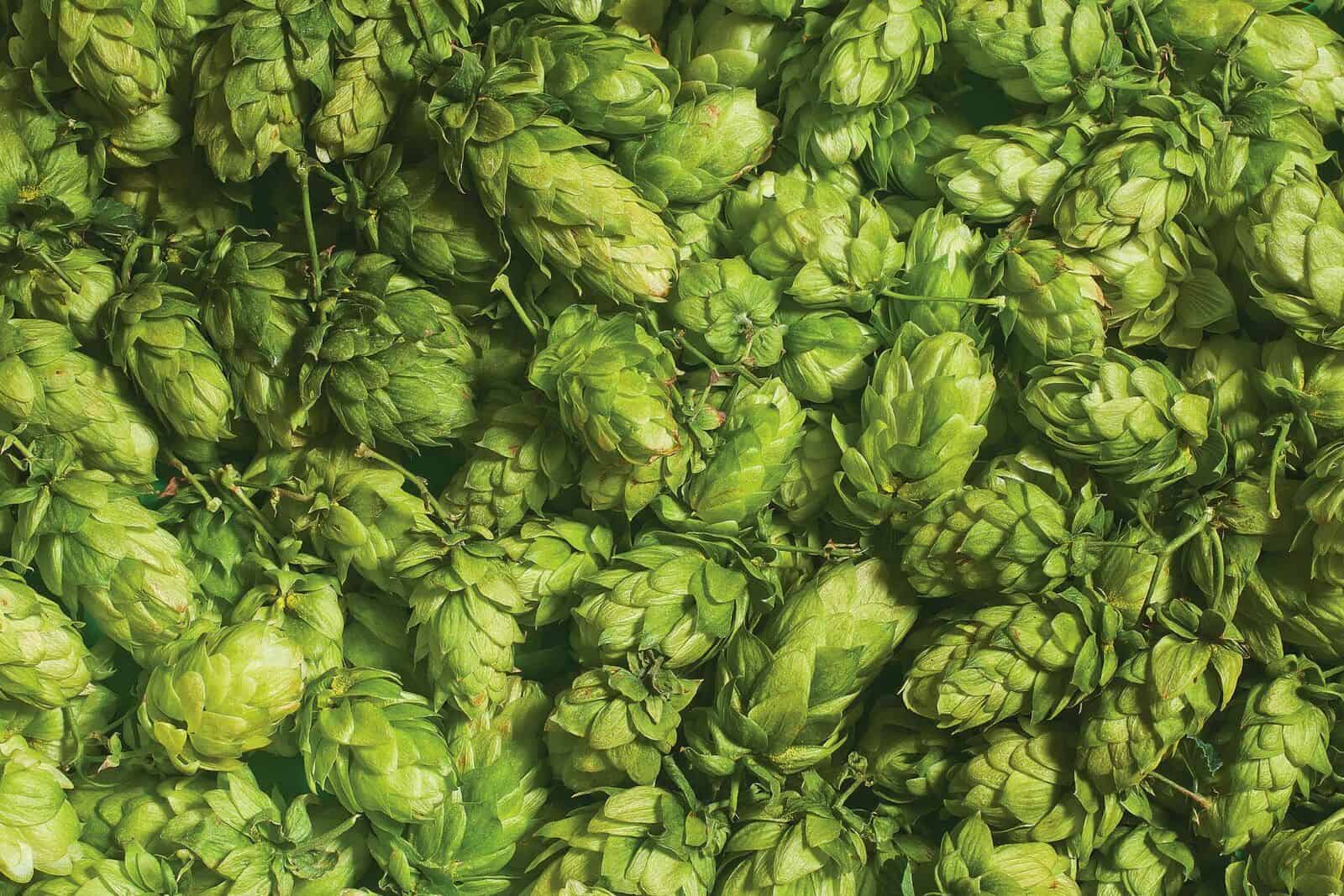
If you were transported back to a medieval pub, you probably wouldn’t recognize the beer. Back then ales were sweeter, flavored using strange botanicals like horehound, mugwort, and bog myrtle. But that changed in 1516, when the Reinheitsgebot (Bavaria’s beer purity law) stipulated that only one plant, a hardy flowering vine called Humulus lupulus, could be used to flavor brews. As German brewing practices grew into the worldwide standard, these buds—also known as hops—were secured as a staple, their spicy, floral bitterness becoming universally recognized.
Today’s brewing scene is hoppier than ever, and not just in terms of increasing bitterness. Farmers and brewers are bringing new hop products to market, expanding the spectrum of aromas, and beckoning even the bitter-averse toward that heady terpenic haze. Flower or powder, fresh or aged, from spicy Saaz to tropical Motueka, there’s a hop for everyone—and a cheese to match.
Fresh Hops
While most hops are frozen for optimal storage, there’s nothing like a bud at its peak freshness—or a beer brewed during harvest season. A classic example hails from Sierra Nevada Brewing Co., the Chico, Calif.–based brewery that pioneered APA and IPA styles and put Pacific Northwest hop farms on the map. Celebration IPA is a fresh hop ale; each harvest season, Cascade, Centennial, and Chinook hops are dried and then immediately shipped to Sierra for production. The beer yields notes of grapefruit and pine needles against a ruddy, malty body. It’s full and earthy enough to stand up to the sharp bite of clothbound cheddar, while the cheese’s creaminess cuts through the bitterness.
Other makers deal with the buds’ short shelf life by brewing with unprocessed “wet” hops, which go from field to kettle within 24 hours. That approach results in subtler, more delicate flavors and a rustic greenness that matches grassy Alpine wheels. Sip Tiny House from Connecticut’s Kent Falls Brewing Co. alongside Vacherin Fribourgeois to amplify the tangy, verdant, and slightly herbal notes of each.
Recommended Pairings
Grafton Village Cheese Clothbound Cheddar + Sierra Nevada Brewing Co. Celebration IPA
Vacherin Fribourgeois AOP + Kent Falls Brewing Co. Tiny House
Aged Hops
In the Senne River Valley near Brussels, Belgium, you’ll find rustic wild ales with a reputation for unique flavors. Here, Belgian lambic brewers age hops rather than use them fresh. The choice is based on the peculiarities of the style; lambics are spontaneously fermented, meaning the yeast is not added directly, but instead comes from the surrounding air. Wild yeast strains lend the brews a rustic funk, musty aromas, and tastes of barnyard and horse blanket. You might think that hops have no place in this tableau, but the brewers know that aged hops yield perfect results. As the buds mature, their bitterness diminishes and flavorful resins oxidize. Not only does that intensify the plant’s antiseptic qualities, helping the wild yeast take hold in the young beer, it also produces isovaleric acid, which adds a cheesy funk.
Match the sharp, rich, and bold flavors of a geuze—a blend of one-, two-, and three-year-old lambics—with an aged gouda. Or, because every spontaneous ale is tied to its terroir, try the chalky, musty Coolship Resurgam from Allagash Brewing Company alongside mushroomy, citrusy bloomy rind Medallion from fellow Mainers Lakin’s Gorges Cheese.
Recommended Pairings
Uniekaas Reserve + Brouwerij Lindemans Cuvée René
Lakin’s Gorges Cheese Medallion + Allagash Brewing Company Coolship Resurgam
Powdered Hops
Believe it or not, the craft brewing community’s buzziest hop treatment now comes in powdered form. Called lupulin powder, this magical yellow-green dust—a concentrate of flavorful resins exuded via the flowers’ specialized glands—can double the hopping rate of a beer without producing off-flavors.
At Other Half Brewing in Brooklyn, brewers toss lupulin powders from both Mosaic and Simcoe varietals into their Double Dry Hopped Broccoli at multiple points during the fermentation. The result is a luscious, soft beer bursting with fresh blueberry and catty hop aromas. Rich aged goat’s milk cheeses stand up well to the musky bite of Simcoe and berry tones of Mosaic. To match the slight sweetness of goat’s milk, spring for an ale brewed with both lupulin powder and wildflower honey.
Recommended Pairings
Twig Farm Old Goat + Other Half Brewing Co. Double Dry Hopped Broccoli
Coach Farm Rawstruck + Night Shift Brewing Buzz
Photography by Vaclav Mach/shutterstock.com



